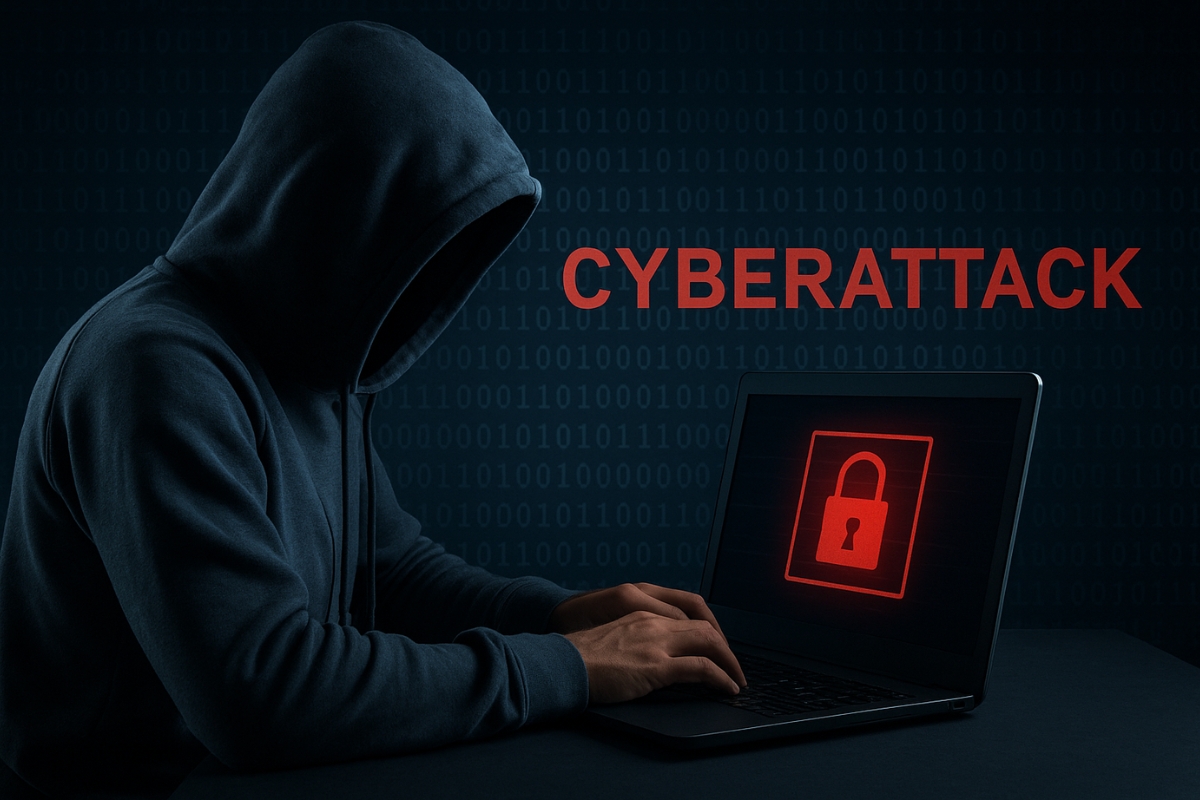Objet : Tax audit of the computerized accountings: legal and litigation aspects
The regime of the tax audit of the computerized accountings (TACA, French CFCI – contrôle fiscal des comptabilités informatisées) establishes a legal framework convenient to the efficiency of the tax audit. In spite of the apparent complexity of the procedure and the contentious traps, having entailed a number of unfavorable decisions for the Administration, the law offers both to the Administration a vast scope and to the taxpayer a specific guarantee particularly circumscribed. The real guarantees of the taxpayers are the ones which are common to all accounting audits. The procedures of TACA (CFCI) have to fit within the framework of the well-tried methods of tax audit, contributing in the same time to their renewal.
Introduction
The recourse to the computing can only be a lever favorable to the efficiency of the tax audit. Companies produce massively data which exceed the capacities of a manual treatment. In numerous situations, only the appeal to the computing may reveal the error or the fraud: accounting which is neither sincere nor convincing in spite of its regularity in the shape, provisions or unjustified transfer prices. Solely a feeble part of tax audit has recourse to CFCI (approximately 1% on average and fewer than 5% for medium and big companies). The complexity of implementation and coordination of the necessary skills, legal and fiscal on one hand, computing and technological on the other hand, is certainly the main cause of this state of fact.
In spite of its complexity, the legal regime of TACA is favorable to the development and to the efficiency of the controls. It has been modified four times within five years. There are few definitions of the basic terms of the regime – to say what covers the term “computerized accounting ” or “IT processing”. The jurisprudence shows a panorama of some few, isolated decisions the underlying principles of which remain little explicit.
In order to better understand this regime, one should dwell then on the following questions:
1. What is the scope of TACA?
2. In which cases the specific guarantees of TACA apply?
Besides TACA, “classic” tax auditing preserves entirely its relevance.
1. Article’s L.13, IV of TPB(tax procedures book) (French-LPF) field of application
2. The possibility of checking the accountings held by means of computer systems was created in 1982 by introducing the third paragraph in the article 54 of the General Tax Code: “If the accounting is established by means of a computerized system, the control extends to the documentation relative to analyses, to programming and to the execution of processing. To make sure of the reliability of the automated processing of the accounting, the Tax agents can proceed to control tests over the equipment used by the company, whose conditions will be further defined by decree”. But the creation of a specific control procedure intervened only eight years later with the modification of the article L.13 of TPB.
This article defines the field of application of the tax audit concerning the taxpayers compelled to keeping and presenting accounting records. Since 1990, a second paragraph has been introduced which allows auditors to accede “information, data, processing and
documentation “ if accounting held by computing means. Since 1st of January 2014, it is mentioned in a paragraph IV, but its wording remained unchanged for about twenty seven years. It is the heart of the legal regime:
“When accounting is held by means of computing systems, the audit concerns the whole of information, data and IT processing which participate directly or indirectly to the formation of accounting or fiscal results and to elaboration of declarations held as obligatory by the
General Code of Taxes, and also on the documentation concerning analysis, programming and execution of treatments.”.
3. Demarcation test
The aim of Article L.13, IV is to allow the Administration to comprehend the logic of the processing of the accounting information made by a company, in order to trace the different phases leading to the result and to the declarations. Administration ought to be able to collect all necessary information, data, processing and documentation in order to understand the result and the declarations. Therefore, all the general accounting is naturally part of TACA’s field, when held by means of a computing system. Every element, transmitted directly to the general accounting by the computing system, without any manual intervention, is equally part of the field. Thus, companies that use ERP (Enterprise resources planning systems), let in the main part of the information which they handle in the field of the procedure. It is the consequence of the integration of their information system.
3 It will be thus easy for the Administration to show how a module, for example SAP, of logistics (MM), of production (PP), of sales (SD) or human resources (HR) is letting in directly the data it process into the accounting and financial module (FI) and even into the management control module (CO).
Finally, there is a third level – the most delicate in litigation – which is the one of computerized devices producing aggregated data, manually taken over by the accounting or financial information system, without however direct integration.
According to the Administration, the primary datum is the one that contribute to the establishment of accounting records or to the justification of an event or of a transcribed situation in the books, registers, documents, pieces and declarations controlled by the fiscal Administration. The integrated datum is the one resulting from a processing made by the company- manually or by computing – of the elementary datum. The definition is difficult but generally it is not such a daunting question to agree if one is in the presence of a primary or integrated datum.
For example, the accounting held on management software is part of the field (first level). If the cash register software makes data that enter directly into the accounting modules, it makes also part of the field (second level). Otherwise, it doesn’t mean that it is necessarily excluded. If it provides for example some integrated data, which is registered even manually afterwards in the accounting software, the processing is part of the field (third level). If a production or logistics software which is included in an invoicing processing – for example, the company charges every time 10 parts are produced as it produces only to order – this processing is necessarily related to the accounting, if made by computing system (second level) as the operation is realized manually (third level): it makes part of the field.
4. The regime of TACA, as issued by the Statute of 29th of December 20121 treats directly the place of the analytic accounting within the field of the regime (TPB, art. L.13, II). Since 1st of January 2014, if the company keeps an analytic accounting and if its business figure exceeds the threshold of 152,4 millions of Euros for the sales and the half of it for service delivery, then the analytic accounting is part of the field.
For the other companies, i.e. those whose business figure does not exceed the above threshold or those not holding an analytic accounting, the test described above applies. If the management information is purely prospective and it has no connection with general accounting (this will surely interest the auditor), it is not part of the field. Conversely, if the management information has an impact on the general accounting, then it enters the field.
5. To sum up, an element is part of the field every time the Auditor establishes that he is not able to understand or control the result, or if such a declaration is made obligatory by the Code, if he has no access to the information, data, processing or documentation of such points X,Y or Z, notwithstanding the domain to which those points are related and even if it is a module of HR, Sale, Production, Logistics, Marketing etc. or a SI integrated or owner.
1
L.n°2012-1510, 29 December 2012, art.14
4
6. The specific case of cash registers – A particularly debated question has been if connected cash registers are the premise for a computerized accounting.
By decision rendered on 9th of April, 20142, the State Council (Conseil d’Etat) estimated that if the general accounting is not held by computing system, then the three cash registers connected between them do not form a computerized accounting.
No computerized general accounting, no auditing of computerized accounting, this seemed to be quite logical… However, even in this extreme case, the field of application of the regime as legally defined is vast enough to question the possible application of a TACA proceeding in various similar cases.
First of all, the Council revealed that on one hand that there was no IT system for the general accounting and secondly that the Administration was not challenging the manager’s allegations that “he would never proceed to the totalization of daily receipts from the three cash registers, not even partially” and that the cash register’s draft would have been be kept manually. Inversely, one would have had some integrated datum that got into the IT accounting system, certainly not computerized, but the Administration killed two birds with one stone: on one hand it proved that it should have access to those processing in order to understand the accounting and, on the other hand, as those processing were computed, it proved the existence of computerized accounting. This is the case appearing in a State Council decision of 29th of October 20123
.
7. What are the criteria in order to know when the Auditor can treat a cash register’s data? If no cash register whatsoever or in case of a manual cash register without any data registered, there is no possibility of TACA and the Administration cannot go on the other side of the counter (from an IT point of view).
But a cash register is, as in the case Gamboni, almost always, a computed cash register, as it beholds cash register software. As seen above, the cash register book can be manually kept. But the cash register ribbon is a computed draft of the cash register.
It seemed to follow from the above decision that if the taxpayer keeps a manual draft of the cash register, by confronting this one to the cash register ribbon, which is the same but on IT support, it does not mean that the cash register is computerized. One could accept this small restriction, however surprising, which may not be significant.
Because there is another obvious condition to rule out the possibility of TACA: it should that every other functionality, even the simplest one, of the cash register software not to have been used: no stock management, no orders, no distinction of VAT rates, not even of totalization of receipts from other cash registers. The existence of a cash register book with all the data summed up should legally entail the change of the data to the TACA field. Thus, except for the ribbon, the cash register has to have been used as a non-computerized cash register.
2 CE, 3rd and 8th subsections, n° 369929, 9th of April 2014
3 CE, (author’s note), 9th subsection, 29th of October 2012, n° 352797
5 Finally, one should keep in mind that businesses not justifying their receipts by invoicing, every detail of every sale should be registered in the accounting books. Exception is made for cash sales, that Administration extend – out of pragmatism and convenience- for payments by credit cards and checks, of a total of 76 Euros by customer.
Therefore, if the accounting is not taking over the whole of the elementary data which supposedly should have been included, or if the data are incoherent, following the principle stated above, the Administration is justified in accessing the computerized data in the cash registers and consequently process them. This last point generates however some hesitation.
In short, the test established by the legislator allows a vast comprehension and one simple justification of the application field of the regime and solely few data remain outside if the company uses IT. That is why the trap of the exit of the field, if it exists, is not an inherent important risk in regimes of the TACA.
Respect of the specific guarantee accorded by law to the taxpayer, object of a processing request, in application of the art. L.47 A II of TPB, is the second apparent trap of the regime. The specific guarantee to TACA (TPB, art.L.47 A, II)
8. The article L.47 A, II of TPB gives the possibility to the Administration of auditing accountings by proceeding to processing.
The law offers to the taxpayers a guarantee consisting in the choice of one from the following three modalities:
– the Auditor performs the processing directly on the taxpayer material;
– the taxpayer carries out the processing for himself;
– the taxpayer gives to the Auditor the necessary files in order for the latter to perform the processing outside the business.
The reason behind this guarantee was to prevent paralyzing the business’s IT system during the tax audit. But this is a major procedural risk for the Administration. The compulsory delivery of accounting records file (ARF, French-FEC), starting as of the 1st of January 2014 (TPB, art. L.47 A, I), even though it allows to better circumscribe the guarantee doesn’t modify its substance.
Let’s illustrate the risk during litigation, by means of an example. In its decision of 24th of August 20114, the State Council stated that the Auditor having used the functionalities of the cash register software of the business, not connected to the accounting software, had performed an IT processing that would obliged him to previously inform the SARL of the different existing options. The State Council annulled the Court of appeal’s decision and discharged the SARL on the whole of its tax impositions.
Therefore it is crucial for the Administration to know when to propose the three modalities of processing above, on one hand to prevent paralyzing the audit by some time-consuming writings or exchanges, as every processing request is object to formalization by the
4 CE, 10th and 9th subsections, 24th of August 2011, n°318144
6 Administration and of the taxpayer’s choice, and on the other hand to secure the procedure. The ideal is for the guarantee to be systematically proposed and as widely as possible.
9. The test to know when the guarantee should be granted is the “processing”. The Law specifies that the test is the “processing” itself. If the Auditor wants to perform a processing, he will apply art. L.47A, II and grant the guarantees attached, namely the three processing modalities above. No processing means no specific guarantee.
Therefore, one should distinguish between:
– Is there the case of computerized accounting (TPB, art. L13, IV and TPB, art. L.47 A) or not? On this question, see n°3 above;
– If yes, is there the case for a processing request (TPB, art. 47A,II) or not (so then TPB, art. L.47, A, I)?
By its decision of 23rd December 20105, the State Council had clearly reminded that the guarantee provided by art. L.47 A, II is applicable only if the Administration wants to proceed to a specific processing ad hoc, on the basis of the business’s IT system.
From now on, the article L. 47 A, I of TPB obliges the taxpayer to give the ARF, but the guarantee linked to the processing does not apply, as the Administration can only perform sorting, ranking and calculations on the ARF. Thus, it is necessary to distinguish between “processing” and “calculation, sorting, ranking”, as the term “processing” has different meanings, whether is the Administration or the business that perform it.
10. Distinguishing between “processing” and “calculation, sorting, ranking”. The article L.47A, I of TPB states that “Administration can perform sorting, ranking and anycalculation in order to ensure there is a matching between the accounting records and the
fiscal (income) declarations of the taxpayer”. This article is combined with art. 102 B of TPB, which obliges the taxpayer to collect the whole of primary data in an electronic form. The ARF needs to allow the tracing of the history of all accounting movements such as orders, deliveries, stock movement, invoices, cost prices, sale prices, amount of the subscriptions, withdrawals (direct-debits), and securities transactions. Inevitably, the consequence is the following: if the Auditor makes sorting, rating and calculations on the basis of the elements that the taxpayer is bound to keep at the
Administration’s disposition, then there is no processing. Processing is therefore an operation more complex than sorting, ranking or calculations. A large part of so-called “processing” are in fact solely operations of sorting (and even less, as IT specialists, familiar with the “Turing” machine, know it so well).
There are many cases where the Administration has simply performed a “matching control” (contrôle de concordance) (as the term appears in the regulation) and discussed it afterwards in an oral and adversarial debate with the checked person, without being a processing.
5 CE, 9th and 10th subsections, 23rd of December 2010, n° 307780
7 Except for the cases when the Administration had explicitly and directly placed itself within the scope of the article L.47 A, II, the judge has to determine if terms as “requests” (“requêtes”) or “specifications of extraction criteria” (“spécifications de critères d’extraction”) constitute a processing or simply operations to obtain the data that is sorted afterwards for the “matching control”, terms that send to I. As the business is required to keep the ARF (FEC) available, a large part of the uncertainty has now disappeared, as the Administration is able to perform by itself its sorting, ranking and calculations without claiming anything else from the taxpayer, on the basis of the provided elements, whenever it may deem it appropriate.
11. Distinguishing between business’s processing (TPB, art. L.13, IV) and Administration’s processing (TPB, art.L.47 A, II).- As seen above, the business that keeps computerized accounting performs itself the necessary processing for the determination of the accounting or fiscal result and the production of declarations and processing that it is bound to keep available for the Administration.(TPB, art.L.13,IV)
It is thus necessary to distinguish the processing of the company and those of the administration:
-the processing of the company are management rules of the data and the files implemented in computer programs having a direct or indirect incidence on the determination of the accounting or fiscal results;
-the processing asked by the Administration are not management rules but an investigation, a control by the Administration which implies the use of the taxpayer’s computing system or the making of a computer program put into production in the taxpayer’s IT system. ,Unfortunately for the clarity of the regime and the certainty of the procedure, when the Administration wishes to simply identify a processing implemented by the business in the sense of a “management rule”, it uses the word “processing”.
Another case, a mixed one, is when the Administration, during the TACA, is controlling the processing performed by the business itself, when the latter has opted to perform itself the processing wished by the Administration.
The Administrative Court of Appeal of Versailles has judged that such a control was a processing following a non-optional method and thus violating the guarantee. The State Council has censored it in a decision dated of 20th of November 20136, as the Court of Appeal omitted to check out if the processing had been realized with the taxpayer’s material or software. The Council followed the Public Rapporteur’s conclusions who, after revealing the origin of the guarantee, has underlined that censure is needed only if the Administration has recourse to the business’s IT system.
This criterion is perfectly justified, even though it is only a necessary condition of the existence of a processing, and not solely a sufficient one, as seen above because of the specific characteristics of the guarantee and of the processing.
6 CE, 9th and 10th subsections, 20th of November 2013, n°334896
8It seems that the area of the guarantee is particularly restrained insomuch of questioning if the legislator had foreseen every possible consequence of the regime as it was created and
modified. Faced with the inefficiency of the regime between 1982 and 1990, without any ad hoc procedure, the legislator had eventually conferred powerful means of investigation to the Administration.
As the field of application of the TACA is quite vast and the specific guarantee is quite slim, it is fundamental that taxpayers benefit of traditional guarantees attached to all tax audit procedures. The relevance of the complement of a “classical” audit
12. The research of the “reality” by exploiting only the data obtained from the IT system, cannot replace traditional methods of extra-accounting reconstitution of receipts which is based on the real conditions of business’s exploitation.
Example 1: the Administration performs processing on the cash register software of a pizza delivery shop. Generally, the pizza is delivered within half an hour of the order. The date and hour of the order and the date and hour of the delivery appear in a file. When delivery’s date does not appear, the system takes on the date of the order and adds thirty minutes.
As the shop has three locations, another file takes over the date of the order, the location code and the ticket number of the delivery. A processing request allowed to the Administration to realize that, in the second file, numerous orders were posterior of their delivery, which meant that tickets have been modified afterwards.
By censing the whole of the modified tickets and comparing them with the others, it found a more important number of offered and some amounts invoiced feeble in absolute value. Then, by crossing the files, the Administration was able to replace the modified date of the order with the real restored one. It compared the percentage of free-of-charge in the two groups, roughly 75% in the modified tickets and 35% in the normal ones. In order to restore the receipts, it crossed the sales with the registered payments, the difference being considered as the dissimulated business figure.
The interesting point is to see that the computerized accounting was the only means to realize that the accounting was not sincere and to allow restoring the receipts, but this restoration of the receipts should have been made by classical means drawn from the real exploitation of the shop. Example 2: in a car renting shop, IT processing allowed the Auditor to realize that some vehicles were provisioned whereas the sale itself of the vehicle intervened before the closing, or the sale has been done without any loss. By this approach, he finds that provisions are approximately 30% superior to the reality., Evidently, if the vehicle is resold before the closing of the exercise, one needs to take into account the sale price and note the “cote argus”. But when discount is based on “argus” of an used car whose listing is inferior of the purchase price, an ulterior sale superior to the “argus” is not sufficient in itself to call into question the provision. This is a basic rule of provisions. Thus, the elements provided by the processing should take into consideration the closing date.
9 IT allows analyzing provisions for thousands of parts, better identifying the statistical analysis of the risk of obsolesce. One should remember that the provision corresponds to the risk of the shop of not finding a buyer for an article become obsolete that must be put to the scrap, and that the only fact of the resale with a loss inferior to the estimated one is not by itself sufficient to call it into question neither in its principle nor in its amount, which means that one should refer to the traditional principles of Tax Law.
13. Generally speaking, the processing performed during the TACA, must be accompanied by a grammar. Its syntax will be constituted by time-tested methods inspired by those done in other audits by integrating the new possibilities offered by IT and the possibility of processing a large amount of data. Its semantics should express itself in clear, usual terms drawn from businesses’ activities. Enhancement cannot be justified only by the crossing of data and files. If TACAs will necessarily allow the development of new methods of reconstitution of taxpayers’ tax bases, they must also be debated in a meaningful way by those interested.
fichier à telecharger:
 161215 Tax audit of the computerized accountings.docx
161215 Tax audit of the computerized accountings.docx










